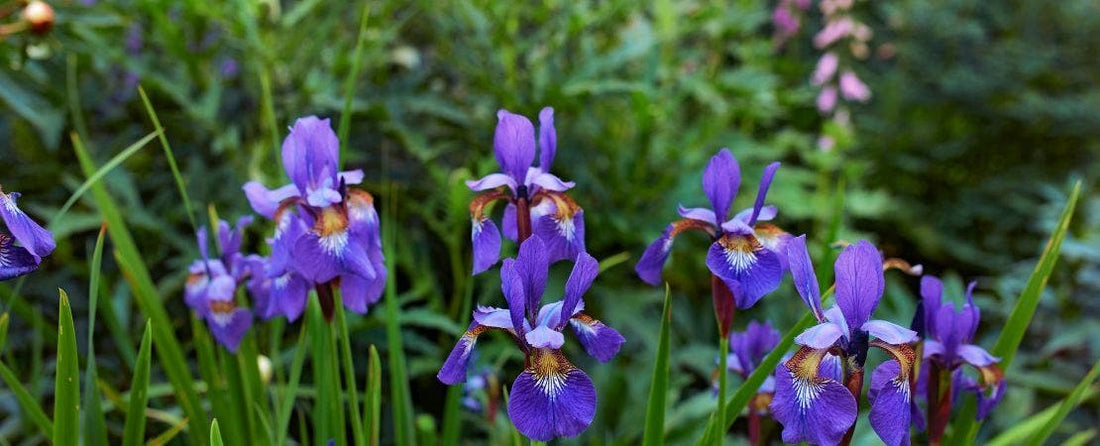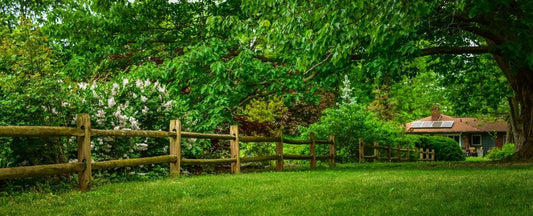Tips for Choosing the Best Type of Iris Flowers for Your Garden

Unique Bloom Forms and Interesting Foliage Make Irises a Gardener's Favorite Perennial
Iris flowers are time-honored beauties. Picture your garden blooming with the graceful petals and unique composition of irises. Iris blooms come in a range of colors, from deep purples to bright yellows and soft whites, and are a symbol of hope, new beginnings, and inspiration.
Lasting Beauty: Iris flowers aren't here today, gone tomorrow. They are perennials that stick around, gracing your garden year after year with their enduring charm.
Busy gardeners rejoice, because iris bulbs and flowers are easy to care for. Once your iris plants are established, they're a breeze to look after. They don't need much attention and give you beautiful blooms in return.
Irises are economical, too. Iris bulbs grow best when divided every few years. That’s great news because you can expand your iris garden patch and share them with friends.
Tips for Where to Plant Irises
You can plant iris flowers just about anywhere in your garden. They can tolerate full sun and shade, depending on the type of iris you choose to grow. Here are a few ideas to inspire you to plant irises:
In the Sun: Plant iris in soil that drains well and gets plenty of sunlight. This way, they'll show off their bright colors and create a stunning display.
By the Water: Some types of irises, like the lovely Japanese Iris, love to grow in damp, soggy spots. They'll bring a calm and serene vibe to your water features and around ponds and streams.
In Containers: If you live in the city or prefer to garden in a small space, iris plants can do really well in big pots. They'll add a burst of color to your balcony or patio, making it feel livelier and more inviting.
Companion Plants for Irises
What grows well with irises? Because these perennials grow in similar conditions they make great companion plants:
Lavender: Mix the calming scent of lavender with the bright colors of iris for a soothing and lovely combination.
Daylilies: Add a splash of summer fun by pairing the bold blooms of daylilies with the graceful iris plants.
Peonies: Celebrate the beauty of spring by planting peonies next to your iris flowers, creating a lush and romantic garden getaway.
Interesting Foliage
The colors of iris foliage, ranging from deep greens to variegated creams and even hints of purple, adding another layer of interest to your garden. Iris leaves can have interesting patterns of stripes and spots, and some even shift colors throughout the seasons, making them visually appealing even when they're not blooming.
A Gardener’s Guide to Different Iris Types
Irises are a cornerstone of many gardens. They come in a wide variety of types, each with its own unique characteristics and growing requirements. Understanding the nuances of each type can help you choose the right irises for your garden's conditions and style. Read on to learn more about the types of irises.
Siberian Iris (Iris sibirica)
Siberian irises are known for their graceful stature, slender foliage, and colorful flowers that stand tall atop long stems. Unlike their bearded counterparts, Siberian irises have smooth, drooping falls (the petal-like sepals) and smaller, upright standards (the true petals). They are remarkably hardy and can thrive in a range of conditions but prefer moist, well-drained soil and full to partial sun. Siberian irises are less susceptible to iris borer pests than other varieties, making them a low-maintenance choice for gardeners looking to add reliable color in late spring to early summer.
German Iris, or Bearded Iris (Iris germanica)
Bearded irises, or German irises, are among the most popular and widely grown. Distinguished by the fuzzy "beards" on their falls, these irises offer a spectrum of colors and patterns. They thrive in full sun and well-drained soil, requiring more effective soil drainage to prevent rot than Siberian irises. Bearded irises are drought-tolerant once established, making them suitable for gardens with dryer conditions. They bloom in late spring, and some varieties offer a second bloom in the fall. For optimal flowering, bearded irises should be divided every three to five years.
Japanese Iris (Iris ensata)
Japanese Irises are known for their large, flat blooms that display intricate patterns in shades of blue, purple, pink, and white. Unlike bearded varieties, these flowers lack a prominent beard. Their sword-shaped foliage, often with a distinct midrib, also sets them apart. They require consistently moist to wet soil and thrive in full sun to partial shade, making them suitable for pond margins, bog gardens, or other damp areas. Blooming from late spring to mid-summer, Japanese Irises are a distinct addition to gardens with their unique appearance.
Unique Growing Requirements
While all irises share some commonalities in their care, each type has its own specific needs:
Siberian Irises perform best in cooler climates but adapt well to various soil types as long as they are kept moist. They are the ideal choice for gardeners looking for minimal fuss with maximum impact.
Bearded Irises need good air circulation around their rhizomes (the horizontal stems) to prevent rot. Planting them so the top of the rhizome is exposed to sunlight is crucial for their health.
Japanese Irises require acidic soil to thrive. If your garden soil is not naturally acidic, amendments with sulfur or the use of acidic mulches like pine needles can help achieve the right conditions.
Each type of iris brings its own beauty to the garden, along with specific requirements for optimal growth. By understanding the unique needs of Siberian, German (Bearded), and Japanese irises, gardeners can make informed decisions that lead to stunning iris gardens year after year. If you're drawn to the elegant simplicity of Siberian irises, the bold drama of Bearded irises, or the water-loving nature of Japanese irises, there's an iris to suit every garden's conditions and style preferences.





